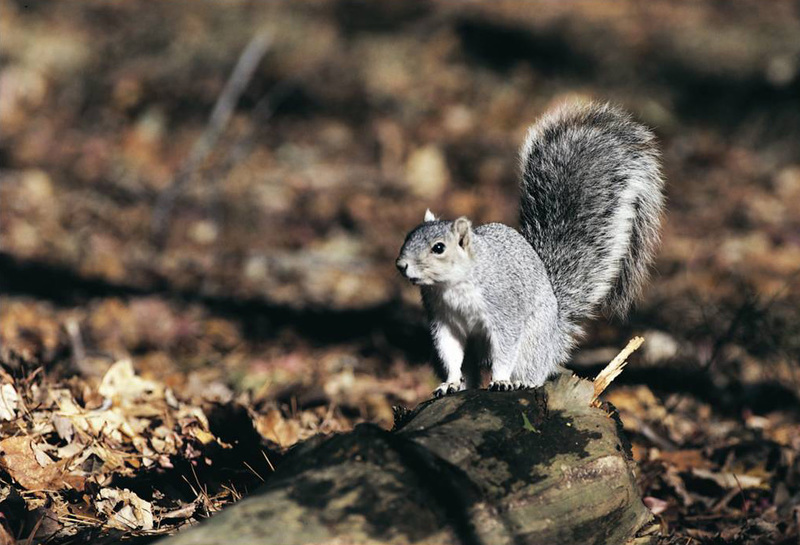The Delmarva fox squirrel, a larger, slower and more silver version of the common gray squirrel, and one of the first species protected by the Endangered Species Act, is no longer at risk of extinction, officials say.
The squirrel, one of two squirrel species found in Delaware, will be removed from the list of threatened and endangered wildlife under the federal Endangered Species Act in December 2015, wildlife officials announced Nov. 13.
Thanks to a collaboration of conservation efforts among federal, state and local agencies, the squirrel's numbers have rebounded to a population of more than 20,000, said Wendi Weber, U.S. Fish and Wildlife Service's Northeast Regional Director.
In Delaware, numbers are still struggling, though, said Kara Coats, Department of Natural Resources and Environmental Control deputy secretary. There are only two known Delmarva Fox Squirrel communities in the First State – one in the Prime Hook National Wildlife Refuge and a second near the Nanticoke Wildlife Area in Seaford. The squirrel's range has increased from four to 10 counties, covering 28 percent of the Delmarva Peninsula.
While the squirrel has been delisted on a federal level, the species is still considered endangered on a state level, Coats said.
“The federal delisting of the Delmarva fox squirrel as an endangered species is an exciting milestone in the progress of wildlife conservation in Delaware and throughout the region,” Coats said in a press release. “Although this unique species is secure on the federal level, it is still rare in Delaware. Through our Delmarva Fox Squirrel Conservation Plan, we have a path forward to further enhancing and restoring Delaware’s population of Delmarva fox squirrels as part of our state’s ecological diversity and landscape.”
Maryland officials also will keep a close eye on the Delmarva Fox Squirrel, considering the species “in need of conservation,” said Glenn Therres, associate director of Wildlife and Heritage Service at the Maryland Department of Natural Resources.
“It's kind of a dream come true,” Therres said about the federal delisting.
Environmental officials will continue to monitor the squirrel's population and habitat for five years following the delisting, while state agencies have adopted individual plans for conservation and translocation efforts.
Delaware's conservation plan aims to increase distribution of the species and ensure population stability by moving squirrels to appropriate locations throughout the state.
Before the squirrel's sharp decline in the mid-1900s, primarily because large amounts of habitat were cleared for farming and other land uses, the species thrived in the forested areas of the Delmarva Peninsula, especially in mature forests. When it was listed as an endangered species in 1967, the Delmarva fox squirrel had disappeared from 90 percent of its former range.
State wildlife officials will focus on helping squirrel populations spread across Sussex County by increasing occupied habitat by at least 900 acres by relocating squirrels, working with private landowners and managing public lands to improve areas near squirrel habitats. Officials also will promote mature forests and riparian buffers, update population estimates, set up long-term monitoring for existing and translocated squirrels, encourage private and public partnerships to help the species thrive and develop a public reporting system to track new sightings.
For more information on Delaware's Delmarva Fox Squirrel Conservation Plan, go to http://www.dnrec.delaware.gov/fw/NHESP/Pages/DFS_plan.aspx.
























































